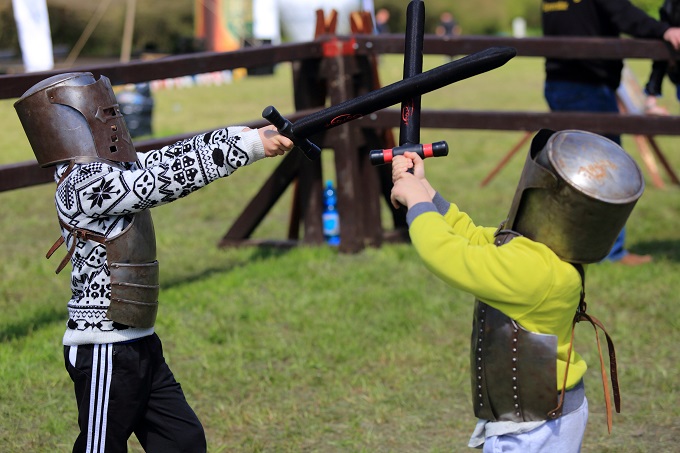Six Organising Concepts to Supercharge Children’s Thinking and Learning
What’s your favourite colour? Mine is purple.

Over the years I have gathered many associations with this favourite colour, not the least of which, is that it represented courage in my days as a competitive racewalker!
When the going got tough I’d visualise a layer of purple revolving around my heart. Then I’d control my breathing, adjust my sporty sunglasses and step up. Colour is the first of 6 concepts we can mobilise to enhance young children’s thinking and learning.
The other five are shape, size, position, number and letter. Each of these comes with qualitatively different modes of thinking.
Even incredibly young children can identify the colour purple. So how is ‘colour’ special? Often when vocabulary is taught, the second the students can identify something, the teaching stops. So purple is just purple. It is an isolated fact. We can leave thinking at the level of recognition and labelling, or we can enrich and expand concepts by deploying three strategies.
Strategy One – The definition is not the endpoint
The first strategy is to see the definition of a concept not as an endpoint but as a starting point for generating multiple connecting ideas. Asking interesting questions prompts students to analyse something in detail and to build up a much richer understanding. This can be done for any of the concepts listed but let’s use colour.
What does the colour purple remind you of? What is important about the colour purple? What are its features? If purple had a sound, what would it be? Which colour would be purple’s friend? What wavelength is purple?
Strategy Two- Move from the specific and particular to the general
Does purple have a family or belong to a group? The second strategy, generalising the idea, places purple into a virtual suitcase with its equivalents, red, yellow, umber and crimson. The suitcase has a category handle, colour, to which they all belong. A category with its contents, behaves as an organising mechanism. When children know about the category, they see how each element within it is similar in some way. The category informs the elements and the elements inform the category. This is simple to understand with colour, but as time goes on students will encounter many more complex categories like, ‘the Fibonacci series’, sources of energy’, ‘revolutions in history’. Early practice with understanding categories paves the way for complex comparative thinking further along.
Strategy Three -Raise the complexity of thinking
The third strategy for enhancing learning is to introduce students sequentially to more complex modes of thinking.
Associative thinking
In developing understanding and creating connections for colour, we rely on the students’ personal associations. They don’t need any definitive knowledge to engage with colour other than its name.
Descriptive thinking (Identifying features)
When it comes to shape, the understanding is founded on specific, interrelated features. The features need to be identified, described, understood and internalised. Is the shape round or linear? If linear, how many sides, corners or angles does it have and how are they related to one another? How is one shape the same and different from another shape. Of course, students can also have a favourite shape with personal associations. After all pizza is round. But shapes demand more work to define and compare features than colour does. Identifying features is a crucial skill which is widely applicable beyond the concept of shape, but shape is a great place to start.
Relative thinking
I offer you a wooden block. It is red and cubed. Is it big or small? You might venture an answer. If I reveal a second block, you will either stick with your first response, or you may have to revise it. The block I produce may be bigger or smaller than the first one. The concept of size is not associative, nor can it be fully defined by the features of an individual object. Size is relative. There is an increasing cognitive complexity as we move from colour to shape to size. When we think about size, children have to absorb information about the dimensions and be able to employ the skill of seriation. Rather than asking, which is bigger and accepting the response, it is important to ask students to explain how and why they have come to their conclusions. Through this practice they become adept at articulating their thought processes in precise language.
Perspectival thinking
When we come to position, a further level of interpretation is required. What is the point of view? Is it a personal point of view, where a branch is above you and a tree is on your left? And if you turn around, some of the information will change? Or is the position described in a fixed reference system like compass points. No matter which way you turn, the sun will always rise in the east. Genuinely unpacking and describing the position of things, brings an increased layer of complexity because students often have to visualise in their minds what changes as things move around. It starts in kindergarten with ‘up and down’ and ends with complex coordinates.
Symbolic thinking
When we get to number and letter, we enter the arena of symbol systems. This is the realm where the number and letter represent something. Each number or letter is an abstract representation without any equivalent in the real world. Numbers are a means for quantifying things around us and letters are the atomic particles of language.
When we introduce children to these six concepts, over time we are moving through increasingly complex modes of thinking: colour: associative – shape: descriptive (identifying features) – size: relative – position: perspectival – number and letter: symbolic. If we are aware of them, we can make them aware too.
If students work through and understand these modes, they will have more flexibility and technical know-how as they encounter new learning content and experiences each day in the classroom.
Lili-Ann Kriegler (B. A Hons, H. Dip. Ed, M.Ed.) is an education consultant and author of Edu-Chameleon. Lili-Ann’s primary specialisations are in early childhood education (birth-9 years), leadership and optimising human thinking and cognition. Her current part-time role is as an education consultant at Independent Schools Victoria and she runs her own consultancy, Kriegler-Education. Find out more at https://kriegler-education.com







